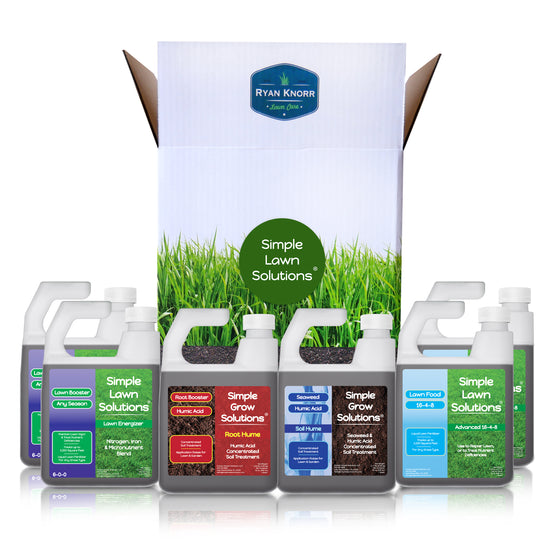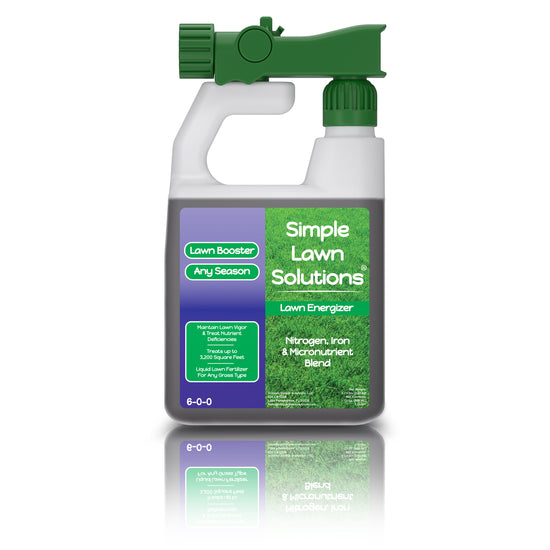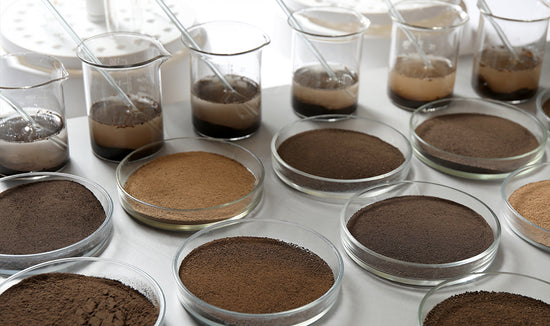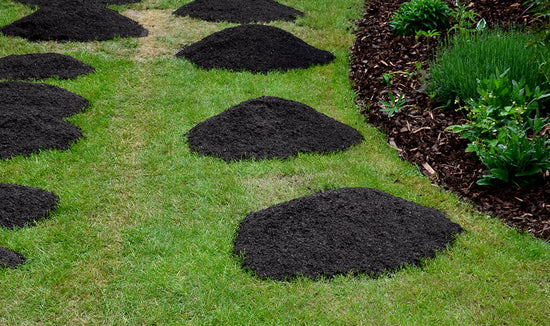You’ve done everything you’re supposed to for the lawn of your dreams. You read all the books, you spoke to the lawn health experts at the local gardening store, and you purchased all the recommended products to get your lawn in tip-top shape. After weeks and weeks in the summer of hard work, you did it! You achieved the beautiful, lush, green lawn that is the talk of the neighborhood.
Unfortunately, fall comes after summer, and winter comes after fall. With the cold creeping in, how are you supposed to take care of the lawn you’ve created?! Many people think that in the winter, lawn care is more challenging than it is in the summer. However, if you prepare correctly, it can be a breeze! If you follow our steps, you can sit back and let nature do its thing. Come spring, your lawn will be looking as fresh as ever.
Our six tips to avoid a decline in lawn health this winter are:
1) Aerate
2) Fertilize your grass
3) Weed your lawn
4) Rake those leaves
5) Mow the blades down
6) Avoid foot traffic
Why your lawn COULD die in the winter:
In theory, if you don’t prepare for the cold, your lawn health could certainly decline.
Contrary to popular belief, grass can survive under the snow, because a blanket of snow over a lawn acts as an insulator. Uncovered grass, however, will experience cold desiccation, one of the things that can kill your lawn in the winter. If the grass isn't covered, it will continue to lose moisture and oxygen after the ground is frozen solid. The roots will then freeze and will not be able to replenish the moisture sucked away by the cold, dry winds.
Snow mold is another thing that can affect your lawn health in the winter months. Snow mold occurs when snow falls on top of the ground that isn't quite cold yet. The moisture from the cold precipitation hitting the warm ground fosters fungal diseases known as snow mold. When the snow melts, you might notice pink or gray fuzzy or crusty patches all over the lawn, causing the grass to die.
Before we start…know your grass!
Before going any further, you must know what type of grass you’re dealing with. Some of these tips might apply to your friend and not to you, and vice versa. That is because different grass types thrive during different times.
Warm-season grasses grow best during the spring and summer, with temperatures between 80 and 95 degrees Fahrenheit. Cool-season grasses grow best when the weather hits 65 to 75 degrees Fahrenheit. With all that said, warm-season grasses thrive the most in southern regions of the U.S., and cool-season grasses thrive the most in northern regions' climates.
Warm-season grasses include:
- Bermudagrass
- St. Augustine grass
- Centipedegrass
- Zoysiagrass
- Bahiagrass
- Carpetgrass
- Buffalograss
Cool-season grasses include:
- Kentucky bluegrass
- Fine fescue
- Tall fescue
- Perennial ryegrass
- Annual ryegrass
- Creeping bentgrass (Pro Tip: Leave this grass to the golf courses)
If your wish is to avoid putting forth the effort of keeping up with your lawn in the winter, a cool-season grass might be right for you. Cool-season grasses have an ideal planting window from September to early November. This time frame allows the grass to mature into a status where it can survive freezing temperatures.

How to avoid the lawn health decline this winter
While some grass is better suited for winter than other grass, any lawn health can certainly be compromised in the cold months. With that said, following our six tips will keep your grass in tip-top shape underneath all that frost and snow.
1) Aerate the ground
Just before the first freeze, you should aerate your lawn. Aerating helps increase lawn health in that it allows the lawn to open up just before the grass goes dormant. In addition, it helps relieve compaction that has built up during the warmer months.
Usually, lawn owners hire someone to aerate their lawn, or they use a machine to do it themselves. This process includes punching holes in the lawn to allow air, water, and nutrients to penetrate the grass roots. The best aerating machines have hollow, metal tines that pull plugs of soil from the ground. Watering your lawn with about an inch of water a day or two prior to aerating will allow the tines to penetrate even deeper.
2) Fertilize your grass
It’s no secret that fertilizing is crucial to lawn health. Fertilizer is filled with all the nutrients your soil and grass need. It is just as crucial to your lawn as sun and water are!
Rain tends to carry nutrients out of your lawn, leaving the grass nutrient deficient. You must replenish the nutrients if you have any hope of green grass.
As a reminder, lawns need the following macronutrients found in fertilizer:
- Nitrogen for dense green top growth
- Phosphorus for root vigor
- Potassium to support essential plant functions
In addition, they need micronutrients for chlorophyll and root development. The most essential micronutrients your lawn craves are:
- Iron
- Copper
- Zinc
- Chloride
- Manganese
- Molybdenum
- Boron
By fertilizing your lawn in the late fall or early winter, you are helping to replace nutrients the soil might have lost during the hot summer months. You might be thinking, “but won’t the cold kill off the nutrients?” The answer is no! Grass roots absorb and store nutrients during the winter months. In the spring, your lawn taps into those stored nutrients to give it a head start, making it green and lush when the snow melts and the sun begins to shine again.
3) Weed your lawn
It’s safe to say nothing destroys lawn health like weeds. Weeds are plants considered undesirable in particular situations, such as farms, parks, lawns, and gardens. With weeds often looking like extra greenery, many people wonder why they're so bad. There are two main reasons: weeds compete for nutrients, and they compete for space.
When fertilizer is dispersed, and weeds are present, weeds tend to soak up the nutrients that the fertilizer offers. This results in the weakening of grass and plants, making your lawn more prone to other issues such as drought, disease, and insect infestation.
When weeds pop up in a lawn, they tend to be invasive. They take over areas outside of their natural habitat, eliminating opportunities for grass and plants to grow and thrive.
To optimize lawn health in the winter, it is essential to take advantage of the fall! Fall is a great time to control weeds such as dandelions, creeping Charlie, etc. You can dig them up or spot-treat problem areas with an herbicide. The critical thing to remember about herbicides is that you must pay attention to specific temperature guidelines. Weeds are actively growing on cool days (but not freezing days!) between 50 and 60 degrees. An herbicide is most effective these days.
4) Rake those leaves
If you’re good about keeping up with your lawn health, you should probably mow your grass every 7 to 10 days in the fall so that leaves don’t build up. If you don’t, your lawn could suffocate!
In autumn, leaves fall to the ground. The cold weather tends to produce dew and moisture that makes those leaves pretty wet. This invites diseases that can easily spread to your grass. You must avoid this at all costs to have a prosperous lawn through the cold and snow.
If the leaves are not too thick or wet, you have an excellent opportunity to re-use them! Use your mower to mulch them into small pieces that recycle nutrients back into your lawn. If the leaves are too thick or wet, rake them up as soon as possible.
Not sure what to do with your leaves once you rake them? Many cities have a leaf collection program! The easiest way to do this is to type into Google or another search engine “(insert city here) leaf collection.” The results tend to be overwhelming! Cities like Sacramento are the poster child of this system. They lay out everything you need to know, from the dates and times of collections to the ideal surface area of your pile.
5) Mow the blades down
There is more to lawn length than simply impressing your father-in-law when he drops in for a surprise visit. Keeping that grass trim is extremely important, especially just before winter creeps in. The last cutting of the season should be in late fall to early winter, at which point the lawn should be approximately 2.5 inches in length. This allows the grass to optimize its photosynthesis during December, January, and February, therefore maintaining resilience.
Certain types of grass can be shorter, but none should be higher than 3 inches. Tall grass can "mat" or compress under snowfall, which can lead to problems in the spring such as snow mold or other fungi. Issues like these affect your long-term lawn health.
6) Avoid foot traffic
Marching on a lawn covered in snow, driving on a lawn covered in snow, and kids playing on a lawn covered in snow can absolutely destroy your grass. T
Any small steps you can take toward eliminating traffic on your lawn will help keep the grass in its best shape.
Lawns are not easy to take care of. Less than one million people have dedicated their lives and careers to landscaping, proving it is a lifestyle meant for only those that are serious about it!
If you’re serious about looking out your window and seeing a beautiful green landscape, it’s important that you not only take note of these tips but also invest the time and effort into lawn care. This includes mowing, fertilizing, and watering every few weeks, aerating once a year, and more.
Let’s say you just so happen to kill your lawn. Do not get discouraged! The overall lawn health of your property is not lost if the weather and its elements outsmart you. Rejuvenation is key, and there are ways to accomplish it. You might have to start from the beginning, but this is a pivotal opportunity to chase after the lawn you've always wanted.
While you might be serious about lawn care, we understand that you also might not be an expert. It is vital to turn to a company you can trust! Between our abundance of quality products and the expert advice we pride ourselves on, you can rely on Simple Lawn Solutions for all your lawn care needs. Check out our fertilizers to prep your lawn, our blog to help guide your daily care, and don’t hesitate to reach out to us with any questions!











